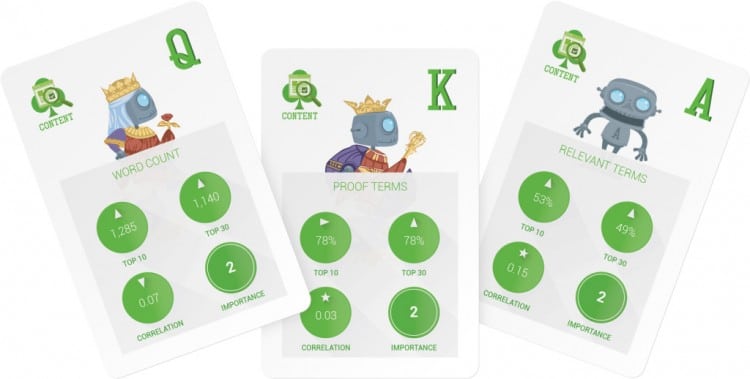According to the latest study by Searchmetrics, Google’s various algorithms are more advanced than ever.
In its fourth annual study of ranking factors by the algorithm of the world’s leading search engine, it examined the results of reference queries in the top 30 for 10,000 keywords involving 300,000 sites.
According to Marcus Tober, founder and CEO of Searchmetrics, the results only confirm the trends announced since the beginning of the year.
It is necessary to seek to understand the intentions of users and create original, relevant and unique content for them, it is more vital than ever…
… It is also clearly established that the importance of backlinks continues to weaken. (Mr. Tober)
In the future, the proportion of search queries made from “mobile devices” will continue to grow, and it will be interesting to see the effects this will have on rankings.
Some factors are perceived as very positive by the study in terms of positioning: these include
- The ergonomics of “mobile” sites »;
- social signals, such as tweets, G+s, and Facebook likes (although Google denies this)
- Backlinks, whose power will decrease, that’s for sure.
On the subject of netlinking, I mention right away that the study notes the effectiveness of the variety of anchors and the importance of the ratio of BL to nofollow.
Illustration from the searchmetrics study
The study focuses on three main categories of parameters:
Technical factors that are very important for positioning in Google.
Compared to last year, the volume of searches for specific domain names has increased significantly.
Brands often rank higher on these searches because of their inherent visibility, but more curiously, it is found that brand name queries, with or without additional keywords, indirectly influence the results of unbranded searches.
Other positive factors for the visibility of a website;
The study highlights factors that I have always “played with”.
- the frequency of H2 tags, (in addition to H1 and meta description);
- short rewritten URLs (they would be worth thousands of keywords!);
- and of course the site’s display speed clearly communicated by Google since 2012
It is finally determined that HTTPS encryption (for the first time considered in this study) does have a positive impact on the place of sites in the SERP, but only for sites that process sensitive data (transactions, payment, passwords, etc)…
” Keyword Domain Names ” are no longer the number 1 positioning advantage they once were. If in 2014, only 9% of the URLs in the top 30 included a keyword in their domain name, this figure has fallen to 6% this year.
Finally, it is not a surprise that the proportion of Flash sites is significantly lower in the first three pages of S.E.R.P. on both desktop and mobile computers.
User experience factors
The architecture and structure of the site’s mesh are essential, both for the crawlability of Google’s bots and for the user experience.
The ergonomics and internal links of a site weigh in the ranking because they are linked:
- the bounce rate,
- time spent on the web portal.
It is therefore clear that quality onpage work can change everything.
Last year, there were 131 internal links in the top 10 rankings, this year the figure climbs to 150.
The same is true for optimizing factors such as responsive design, font size, and interactive element size. (Buttons, links, forms)
Bulleted lists also seem to be ranking factors, they can be found in half of the sites in the top 2 and still 40% in the top 30.
Setbacks:
Yet, while it is known that the number of images helps ranking performance, the number of sites that display videos dropped in 2014.
Searchmetrics also determined that a large number of ads were hurting rankings.
Content-Related Factors.
The content of the pages ranked in the top 30 has thickened. The average number of words used in the top 10 pages is 1285, (25% more than last year)
This content is also less complex and more holistic. More and more sites are basing their texts on the lexical field, using terms that are as precise as they are relevant.
Just like with the technical aspect of websites, the strict notion of keywords has evolved enormously.
Searchmetrics notes that the percentage of pages that want to rank on a strict keyword by inserting it heavily in a ” bully triple ” style has decreased, especially in the top 5.
On the other hand, the anchor of internal links retains its weight in the mesh of your web portal.
The full study can be downloaded here, a brilliant infographic reveals the main currents.
(Image © rights searchmetrics.com)
Kristof: SME SEO agency

